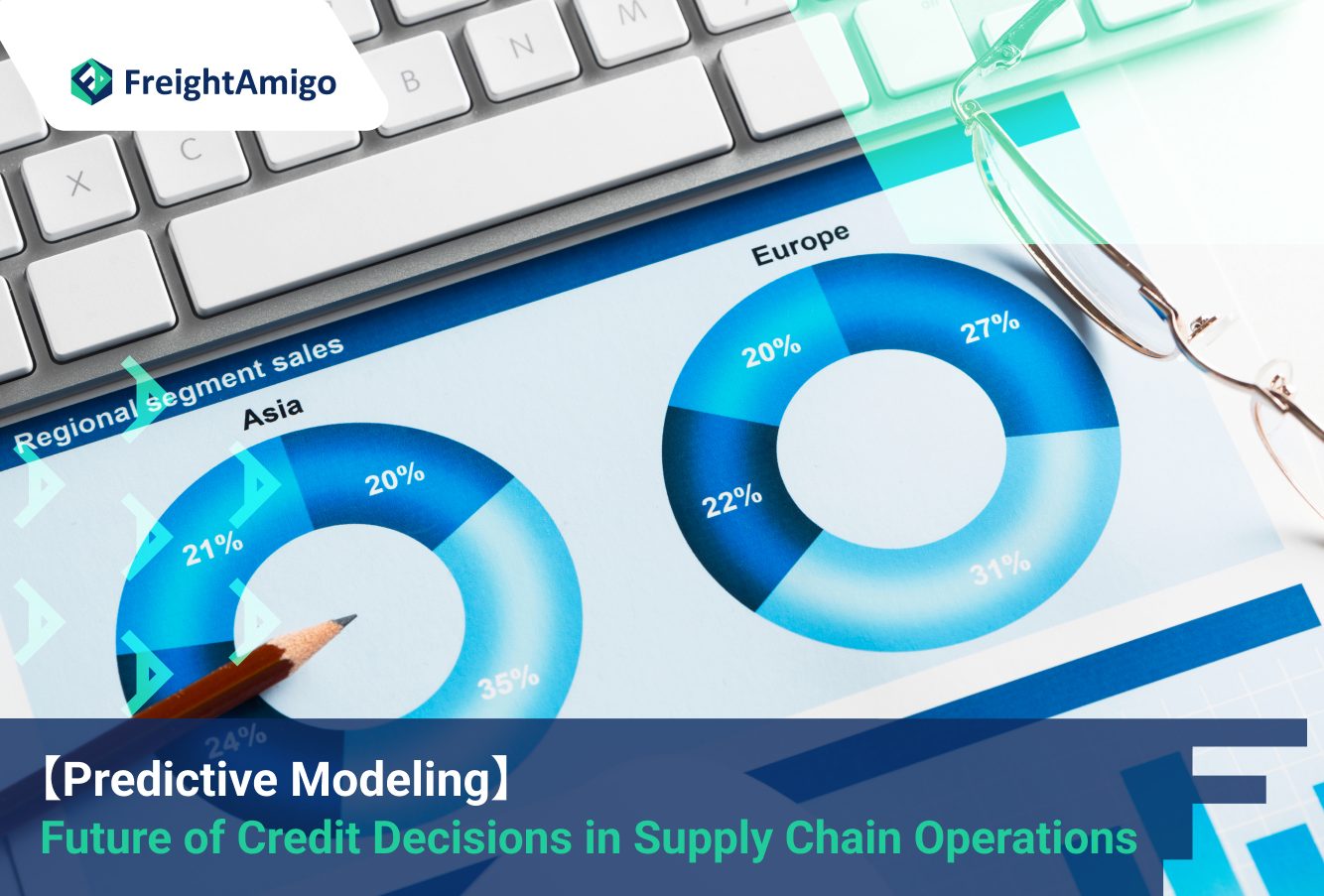Author Name: Tiffany Lee – Marketing Analyst at FreightAmigo
Predictive modeling is transforming credit decisions in supply chain operations. It uses historical and real-time data to forecast future outcomes, enabling businesses to make data-driven decisions that enhance operational efficiency, minimize risks, and optimize customer service. In this article, we delve into the intricate world of predictive modeling, revealing its significance, benefits, applications, and implementation process in the context of credit decisions within supply chain operations.
Want To Compare The Best Express, Air Freight, Sea Freight, Rail Freight & Trucking Rates So As To Have Better Control On Cost?
Understanding Predictive Modeling
Predictive modeling involves using historical and present data to predict future outcomes. Advanced analytical techniques, such as statistical algorithms and machine learning, can unearth hidden insights from data. This enables businesses to anticipate shifts in market trends, customer behavior, and supply chain operations.
Significance of Predictive Modeling in Supply Chain Operations
Predictive modeling is crucial in supply chain management. This article explores the significant impact of predictive modeling on supply chain operations. It helps businesses predict future outcomes, make proactive decisions, and stay ahead of competitors.
Demand Planning & Forecasting
Businesses can use predictive modeling to accurately forecast future demand, align production schedules, optimize inventory levels, and ensure timely product replenishment. By predicting customer demand based on historical sales data, market trends, and external factors, organizations can reduce stockouts, minimize excess inventory, and enhance customer satisfaction.
Inventory Optimization
Maintaining a balance between supply and demand, minimizing costs, and delivering exceptional customer experiences requires effective inventory management. Inventory optimization is facilitated by predictive modeling, which identifies patterns in customer demand, seasonality changes, and market dynamics. This information helps businesses optimize stock levels, minimize overstocking or stockouts, and ensure on-time deliveries.
Supplier Management & Risk Mitigation
Businesses can use predictive modeling to assess supplier performance and anticipate issues. By analyzing supplier reliability, quality standards, and delivery timelines, organizations can optimize supplier selection, negotiate better terms, and foster strategic partnerships. This mitigates supply chain risks and ensures continuity of operations.
Predictive Modeling and Credit Decisions
Predictive modeling is becoming an essential tool for making credit decisions in supply chain operations. It analyzes historical credit data and current financial metrics to assess the creditworthiness of customers or suppliers. This helps businesses manage credit risks and enhance financial stability.
Credit Risk Assessment
Predictive modeling makes credit risk assessment easier by analyzing historical credit data, financial statements, payment history, and market information. This helps businesses evaluate the creditworthiness of their customers or suppliers, enabling them to make informed credit decisions and manage credit risks effectively.
Credit Limit Optimization
Predictive modeling is crucial in optimizing credit limits. It analyzes customer credit history, payment behavior, and financial capacity to set appropriate credit limits. This ensures timely payments and minimizes credit losses.
Delinquency Prediction
Predictive modeling can help predict delinquency by analyzing payment behavior patterns, financial stress indicators, and external factors. Predictive modeling can help predict delinquency by analyzing payment behavior patterns, financial stress indicators, and external factors. Predictive modeling can help predict delinquency by analyzing payment behavior patterns, financial stress indicators, and external factors. This enables businesses to take proactive measures to mitigate credit losses.
Implementation of Predictive Modeling in Supply Chain Operations
These include strategic planning, technical expertise, and organizational support. To implement predictive modelling in supply chain operations, businesses need to follow a few steps. By harnessing the power of predictive modelling, businesses can improve their supply chain operations.
Data Collection & Preprocessing
To implement predictive modeling, start by collecting relevant data from various internal and external sources, such as sales records, inventory data, supplier performance metrics, and financial information. After collecting the data, preprocess it to ensure accuracy and consistency.
Model Selection & Training
To choose an appropriate predictive model, consider the specific objectives and requirements of the business. Once selected, train the model using historical data to learn patterns and relationships. This will enable the model to predict future outcomes.
Model Evaluation & Deployment
The model is evaluated after training to assess its accuracy and reliability. If satisfactory results are achieved, it is deployed to generate predictions on new or unseen data. This enables businesses to make proactive decisions and take timely actions based on the predictions.
Continuous Monitoring & Refinement
It is crucial to continuously monitor and refine the predictive model to maintain its accuracy and relevance over time. This includes tracking model performance, identifying improvements, and making necessary updates or refinements.
Future of Predictive Modeling in Supply Chain Operations
As businesses operate in a complex and dynamic environment, the need for predictive modelling in supply chain operations is expected to grow. Predictive models are becoming more accurate and efficient with advancements in artificial intelligence and machine learning. This enables businesses to make informed and proactive decisions. Predictive modeling is set to revolutionize supply chain operations, offering businesses a competitive edge. It can be used for forecasting demand, optimizing inventory, managing credit risks, and enhancing customer service.
In conclusion, predictive modeling is proving to be a game-changer in the realm of credit decisions in supply chain operations. Businesses can use data and advanced analytics to anticipate future trends, mitigate risks, optimize operations, and deliver superior customer experiences. Predictive modeling is a compass that guides businesses towards sustainable growth and success in the digital age.
There Are Different Options For Cargo Transportation. If You Want To Choose The Most Convenient And Suitable Solution, It Is Best To Have The Full Support Of Logistics Experts! If You Are Planning To Ship Goods Overseas, Please Go To The FreightAmigo Page For Inquiries.
===
Read More:
【Cosmetic Product Recycling】 A Guide to Sustainable Reverse Logistics
【Rise of Green Supply Chain】 Pioneering Sustainable Practices in Logistics
【ESG in Logistics】 How ESG Practices Drive Social Responsibility in Logistics
===
If you have any inquiries on logistics/supply chain, feel free to contact FreightAmigo now:
Chat with us online OR
Phone : +852 28121686
WhatsApp: +852 27467829









































